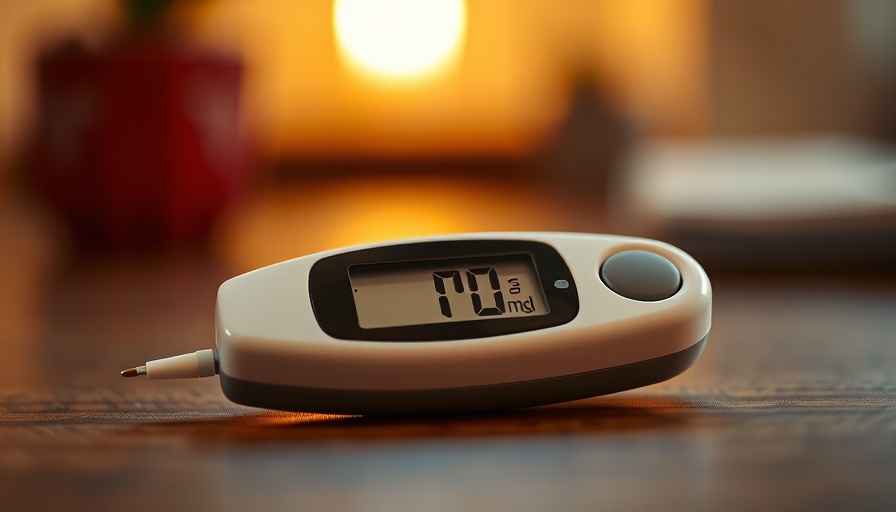
Understanding Low Blood Sugar: The Basics
Low blood sugar, medically known as hypoglycemia, occurs when blood glucose levels fall below 70 mg/dL. This condition can develop suddenly and is particularly concerning for diabetes patients, who often manage their glucose levels meticulously. Recognizing the signs early and responding swiftly can prevent severe complications that may arise.
Common Symptoms to Watch For
The symptoms of hypoglycemia can vary in intensity and may manifest differently among individuals. Common signs include shakiness, dizziness, sweating, confusion, rapid heartbeat, irritability, blurred vision, and a general feeling of weakness or fatigue. If not addressed, these symptoms can escalate to more serious issues, including loss of consciousness or seizures.
Causes of Low Blood Sugar: Understanding Triggers
Various factors can contribute to low blood sugar, particularly for those with diabetes. These include:
- Skipping Meals: Prolonged periods without food can quickly deplete glucose levels.
- Excess Insulin: Administering too much insulin can lead to rapid drops in blood sugar.
- Strenuous Exercise: Engaging in extended physical activity without proper nutrition can cause hypoglycemia.
- Alcohol Consumption: Drinking on an empty stomach can disrupt glucose regulation.
- Certain Medications: Some pharmaceuticals, especially those prescribed for diabetes, can inadvertently trigger low blood sugar.
- Medical Conditions: Illnesses like adrenal insufficiency may also cause hypoglycemia.
Immediate Actions to Raise Blood Sugar Levels
If you notice symptoms of low blood sugar, it’s crucial to act quickly:
- Fast-Acting Carbohydrates: Consume 15-20 grams of quick carbohydrates, such as glucose tablets or fruit juices. These provide an immediate source of glucose to elevate blood sugar levels swiftly.
- Recheck Blood Sugar: After 15 minutes, test your levels again. If they remain low, repeat the carbohydrate intake.
- Stabilizing Snack: Once blood sugar levels increase, follow up with a balanced snack containing both protein and carbohydrates—such as peanut butter and crackers—to help maintain stable levels.
The Emotional Side of Managing Low Blood Sugar
Living with the constant threat of hypoglycemia can feel overwhelming. Many individuals experience anxiety or fear over potential hypoglycemic episodes, which can affect both their physical and mental well-being. Empowering yourself by understanding your body’s responses and preparing for low blood sugar episodes can significantly alleviate these concerns.
Preventive Measures for Hypoglycemia
Preventing low blood sugar is much easier than managing its effects. Here are some proactive strategies you can implement:
- Regular Meal Schedule: Try to eat balanced meals at regular intervals to maintain steady glucose levels throughout the day.
- Monitor Insulin Doses: Consult with your healthcare provider to ensure that your insulin doses are suitable for your lifestyle and dietary habits.
- Carry Snacks: Keeping easy-to-access snacks on hand, especially during physical activity or long periods without food, enables you to manage low blood sugar risks better.
Conclusion: Be Proactive, Not Reactive
Recognizing, preventing, and managing low blood sugar (hypoglycemia) is a crucial aspect of living with diabetes. By understanding the symptoms, knowing the causes, and preparing for potential episodes, you can greatly enhance your quality of life. Take charge of your health by staying informed and proactive, allowing you to navigate diabetes with confidence.
If you haven’t already, consider reaching out to a healthcare professional for personalized guidance on managing your blood sugar levels effectively. Your health is paramount, and the knowledge gained will empower you to make the best choices.
 Add Row
Add Row  Add
Add 




 Add Row
Add Row  Add
Add 

Write A Comment